We shortened the Way of St. James, which leads from Cologne through endless street canyons, a little and took the S-Bahn to Brühl to visit the castle park there extensively. The Way of St. James passes by the castle.
Augustusburg Castle in Brühl
The Archbishop of Cologne, Clemens August I of Bavaria (1700-1761), from the Wittelsbach dynasty, had Augustusburg Palace built in the rococo style in place of an earlier moated castle of the archbishops. The castle and park were jointly inscribed on the UNESCO World Heritage List in 1984.
The garden artist Dominique Girard, who had received his training in Versailles, designed the Brühl garden parterre from 1728. He had already designed the gardens of Nymphenburg and Schleißheim as well as the Upper Belvedere in Vienna according to the strict rules of French garden art.
The focal point of the Brühl gardens is the large two-part broderie parterre (French for embroidery) to the south of the palace, with round and four-pass fountain pools and an adjoining reflecting pond.
The Baroque parterre was restored between 1933 and 1937 on the basis of the original garden plan and is today considered one of the most authentic examples of 18th century French garden art in Europe.
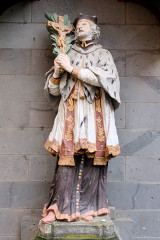
We found this Nepomuk near the castle chapel "St. Mary of the Angels". The plaque reads: Elector Clemens August donated this statue of St. John Nepomuk from the workshop of the Asam brothers, Munich in memory of his friend Baron Johann Bapt. von Roll, who died on 5 May 1733.
The Way of St. James from Brühl passes through non-photogenic suburban areas and it was raining. Therefore, I did not take any photos, except for this interesting cross.

The Passion story is pictorially depicted on this cross along the way.
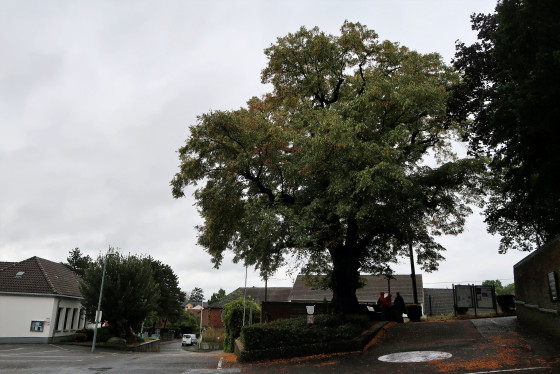
Gerichtslinde (Court lime tree) in Bornheim-Walberberg
In Bornheim-Walberberg we visited the church St. Walburga.
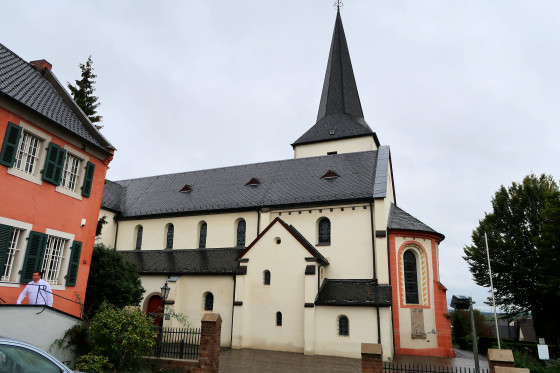
St. Walburga in Bornheim-Walberberg
Originally, it was the church of a Cistercian convent. The core of the Romanesque pillar basilica consists of a hall building from the early 11th century, which was raised in the second half of the 12th century and extended into a basilica by the addition of side aisles. Today's appearance is strongly influenced by a restoration of the years 1850-1860 as well as the reconstruction in the 1950s after the destruction in the Second World War. Since the third quarter of the 11th century, the bones of St. Walburga, an abbess of the 9th century, have been kept and venerated in the church; together with the donation of relics by Archbishop Anno II of Cologne, a change of patronage from the Mother of God to St. Walburga took place.

Interior view of St. Walburga. The priest tells the history of the church.

Statue and relics of St. Walburga
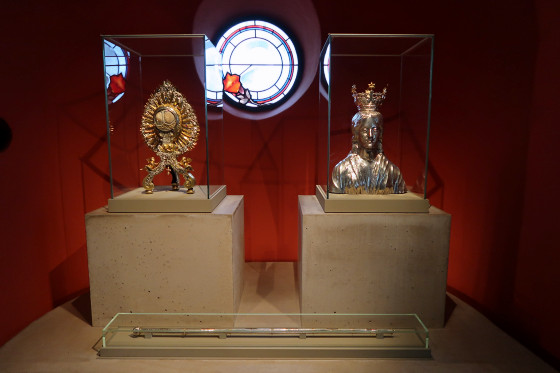
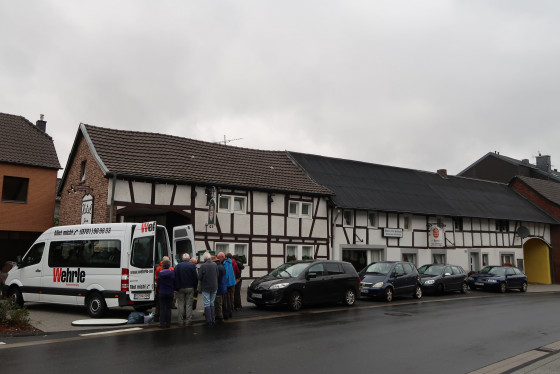

Our accommodation in Weilerswist, the Hotel zum Schwan







